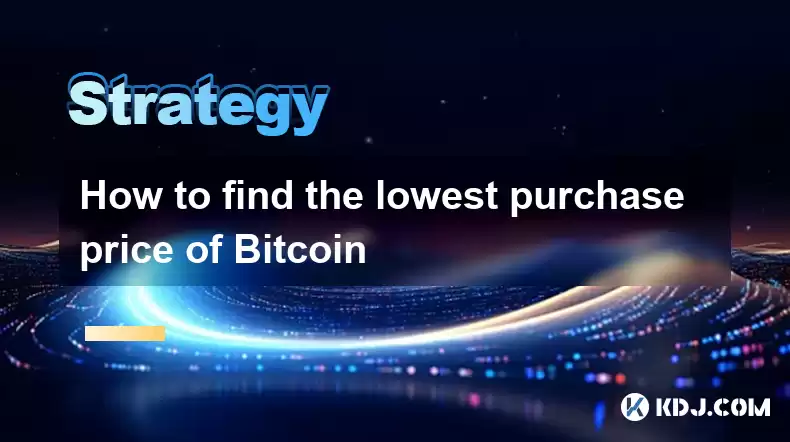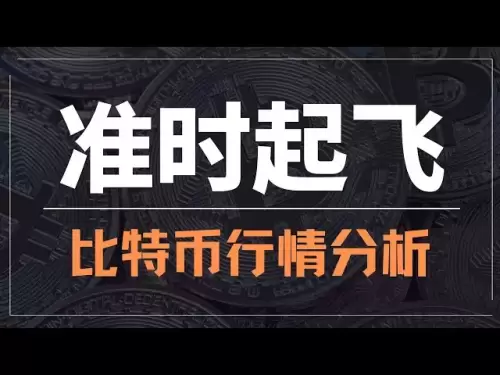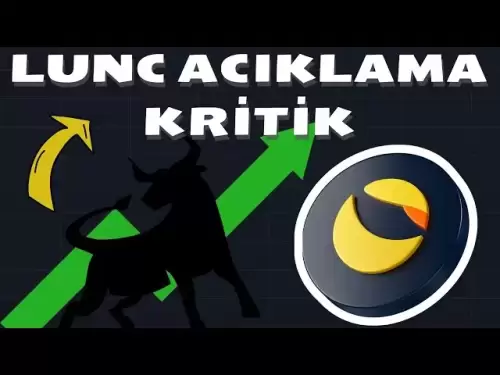-
 Bitcoin
Bitcoin $116400
0.87% -
 Ethereum
Ethereum $3819
3.86% -
 XRP
XRP $3.048
1.62% -
 Tether USDt
Tether USDt $1.000
0.03% -
 BNB
BNB $777.2
0.60% -
 Solana
Solana $169.3
0.46% -
 USDC
USDC $0.0000
0.02% -
 TRON
TRON $0.3414
2.06% -
 Dogecoin
Dogecoin $0.2126
3.33% -
 Cardano
Cardano $0.7527
1.21% -
 Hyperliquid
Hyperliquid $38.86
1.02% -
 Sui
Sui $3.683
5.27% -
 Stellar
Stellar $0.4048
1.45% -
 Chainlink
Chainlink $17.91
6.62% -
 Bitcoin Cash
Bitcoin Cash $576.9
1.29% -
 Hedera
Hedera $0.2487
1.03% -
 Ethena USDe
Ethena USDe $1.001
-0.01% -
 Avalanche
Avalanche $22.46
1.07% -
 Litecoin
Litecoin $120.8
1.69% -
 UNUS SED LEO
UNUS SED LEO $8.963
-0.30% -
 Toncoin
Toncoin $3.301
2.33% -
 Shiba Inu
Shiba Inu $0.00001250
1.13% -
 Uniswap
Uniswap $10.06
3.45% -
 Polkadot
Polkadot $3.731
1.56% -
 Dai
Dai $1.000
0.01% -
 Bitget Token
Bitget Token $4.416
1.58% -
 Cronos
Cronos $0.1482
3.73% -
 Monero
Monero $250.0
-12.34% -
 Pepe
Pepe $0.00001075
2.16% -
 Aave
Aave $274.6
4.17%
How to find the lowest purchase price of Bitcoin
To find the lowest Bitcoin price, compare across exchanges, use price tracking tools, time purchases with market analysis, and consider P2P and decentralized platforms.
Apr 16, 2025 at 01:01 am

Finding the lowest purchase price of Bitcoin is a goal for many crypto enthusiasts looking to maximize their investments. Understanding the various factors that influence Bitcoin's price and knowing where and how to look for the best deals are crucial steps in this process. In this article, we'll explore the different methods and tools you can use to find the lowest purchase price of Bitcoin.
Understanding Bitcoin's Price Dynamics
Bitcoin's price is influenced by a myriad of factors, including market demand and supply, regulatory news, macroeconomic trends, and technological developments. To find the lowest purchase price, it's essential to have a grasp of these dynamics. For instance, periods of high volatility can lead to price dips, which savvy investors can capitalize on. Monitoring news and market analysis can provide insights into when these dips might occur.
Comparing Cryptocurrency Exchanges
One of the most straightforward ways to find the lowest purchase price of Bitcoin is by comparing prices across different cryptocurrency exchanges. Each exchange may have slightly different prices due to factors like liquidity, fees, and geographic location. Here's how you can compare prices effectively:
- Visit multiple exchange websites or use a price comparison tool: Websites like CoinMarketCap, CoinGecko, and CryptoCompare allow you to see Bitcoin's price across various exchanges in real-time.
- Consider the fees: Some exchanges might offer lower Bitcoin prices but charge higher trading fees, which can negate the benefit of a lower purchase price.
- Check for regional differences: Exchanges in different countries might have different prices due to local demand and supply dynamics.
Utilizing Price Tracking Tools
Price tracking tools are invaluable for finding the lowest purchase price of Bitcoin. These tools not only provide real-time price data but also offer alerts and historical price analysis. Here are some popular tools and how to use them:
- CoinMarketCap: This platform allows you to track Bitcoin's price across hundreds of exchanges. You can set up price alerts to notify you when Bitcoin reaches a certain price level.
- CryptoCompare: Similar to CoinMarketCap, CryptoCompare provides detailed price data and historical charts. You can use their API to build custom tracking tools if needed.
- Blockfolio: This mobile app allows you to track your cryptocurrency portfolio and set up price alerts. It's particularly useful for monitoring Bitcoin's price on the go.
Timing Your Purchase with Market Analysis
Timing your purchase can significantly impact the price you pay for Bitcoin. Market analysis tools can help you identify the best times to buy. Here's how to use market analysis to your advantage:
- Technical Analysis: Use tools like TradingView to analyze Bitcoin's price charts. Look for patterns and indicators that suggest a potential price dip.
- Fundamental Analysis: Stay informed about news and events that could affect Bitcoin's price. Websites like CoinDesk and CryptoSlate offer up-to-date news and analysis.
- Sentiment Analysis: Platforms like LunarCrush and CryptoQuant provide insights into market sentiment, which can influence Bitcoin's price.
Leveraging Peer-to-Peer Platforms
Peer-to-peer (P2P) platforms can sometimes offer lower prices than traditional exchanges. On these platforms, you buy Bitcoin directly from other users, and prices can vary based on individual sellers. Here's how to use P2P platforms effectively:
- Sign up for a P2P platform: Popular P2P platforms include LocalBitcoins and Paxful.
- Browse listings: Look for sellers offering Bitcoin at competitive prices. Be sure to check their ratings and reviews to ensure a safe transaction.
- Negotiate: Many P2P platforms allow you to negotiate prices directly with sellers, which can lead to even lower purchase prices.
Considering Decentralized Exchanges
Decentralized exchanges (DEXs) can also be a source of lower Bitcoin prices. Since DEXs operate without a central authority, they can sometimes offer better rates. Here's how to find the lowest price on a DEX:
- Choose a reputable DEX: Platforms like Uniswap and SushiSwap are popular choices.
- Check liquidity pools: Different liquidity pools on DEXs may offer varying prices for Bitcoin. Look for pools with high liquidity to ensure you get the best rate.
- Use DEX aggregators: Tools like 1inch and Matcha aggregate prices from multiple DEXs, helping you find the lowest price available.
Frequently Asked Questions
Q: Can I use a VPN to access lower Bitcoin prices on international exchanges?
A: Using a VPN to access international exchanges might allow you to see different prices, but it's important to consider the legality and security implications. Some exchanges may have restrictions on VPN use, and using a VPN could potentially violate their terms of service.
Q: How often should I check Bitcoin prices to find the lowest purchase price?
A: The frequency of checking Bitcoin prices depends on your investment strategy. For short-term traders, checking prices multiple times a day might be necessary. For long-term investors, checking prices daily or weekly might be sufficient.
Q: Are there any risks associated with buying Bitcoin at the lowest price?
A: Yes, buying Bitcoin at the lowest price can come with risks, such as buying during a market dip that might continue to fall. Additionally, using lesser-known exchanges or P2P platforms to find lower prices can expose you to security risks. Always do thorough research and consider the potential downsides before making a purchase.
Q: Can automated trading bots help me buy Bitcoin at the lowest price?
A: Automated trading bots can be programmed to buy Bitcoin at specific price points, potentially helping you purchase at the lowest price. However, these bots come with their own set of risks and complexities, and they require careful setup and monitoring to ensure they operate as intended.
Disclaimer:info@kdj.com
The information provided is not trading advice. kdj.com does not assume any responsibility for any investments made based on the information provided in this article. Cryptocurrencies are highly volatile and it is highly recommended that you invest with caution after thorough research!
If you believe that the content used on this website infringes your copyright, please contact us immediately (info@kdj.com) and we will delete it promptly.
- Pi Coin's dApp and AI Potential: Building a Decentralized Future
- 2025-08-08 02:30:12
- Bitcoin, Greenidge, and Liquidity: Navigating the Crypto Currents in NYC
- 2025-08-08 02:30:12
- Crypto Phishing Alert: $3 Million USDT Loss Highlights DeFi Risks
- 2025-08-08 01:10:12
- Crypto Presale Mania: Is Punisher Coin the High ROI King?
- 2025-08-08 01:10:12
- Online Betting, Platforms & Crypto Access: What's Hot in 2025
- 2025-08-08 00:50:12
- Layer Brett: The Meme Coin Primed for 100x Gains?
- 2025-08-08 01:50:12
Related knowledge

How to avoid common crypto investment mistakes?
Jul 13,2025 at 01:35am
Understanding the Risks of Crypto InvestmentInvesting in cryptocurrency can be highly rewarding, but it also comes with significant risks. One of the ...

What is a long-short crypto strategy?
Jul 15,2025 at 10:56am
Understanding the Basics of a Long-Short Crypto StrategyA long-short crypto strategy is an investment approach where traders simultaneously take long ...

What is a long-short crypto strategy?
Jul 11,2025 at 01:28pm
Understanding the Basics of Long-Short Crypto StrategyA long-short crypto strategy is an investment approach where traders take both long and short po...

How to use the RSI indicator for crypto?
Jul 12,2025 at 03:56pm
Understanding the RSI Indicator in Cryptocurrency TradingThe Relative Strength Index (RSI) is a momentum oscillator used to measure the speed and chan...

Is copy trading a good strategy for crypto beginners?
Jul 12,2025 at 08:28am
Understanding Copy Trading in the Cryptocurrency MarketCopy trading is a strategy where novice traders replicate the trades of experienced investors a...

How to build a crypto portfolio with $1000?
Jul 13,2025 at 08:14pm
Understanding the Basics of Cryptocurrency InvestmentBuilding a crypto portfolio with $1000 starts with understanding the fundamentals of cryptocurren...

How to avoid common crypto investment mistakes?
Jul 13,2025 at 01:35am
Understanding the Risks of Crypto InvestmentInvesting in cryptocurrency can be highly rewarding, but it also comes with significant risks. One of the ...

What is a long-short crypto strategy?
Jul 15,2025 at 10:56am
Understanding the Basics of a Long-Short Crypto StrategyA long-short crypto strategy is an investment approach where traders simultaneously take long ...

What is a long-short crypto strategy?
Jul 11,2025 at 01:28pm
Understanding the Basics of Long-Short Crypto StrategyA long-short crypto strategy is an investment approach where traders take both long and short po...

How to use the RSI indicator for crypto?
Jul 12,2025 at 03:56pm
Understanding the RSI Indicator in Cryptocurrency TradingThe Relative Strength Index (RSI) is a momentum oscillator used to measure the speed and chan...

Is copy trading a good strategy for crypto beginners?
Jul 12,2025 at 08:28am
Understanding Copy Trading in the Cryptocurrency MarketCopy trading is a strategy where novice traders replicate the trades of experienced investors a...

How to build a crypto portfolio with $1000?
Jul 13,2025 at 08:14pm
Understanding the Basics of Cryptocurrency InvestmentBuilding a crypto portfolio with $1000 starts with understanding the fundamentals of cryptocurren...
See all articles

























































































